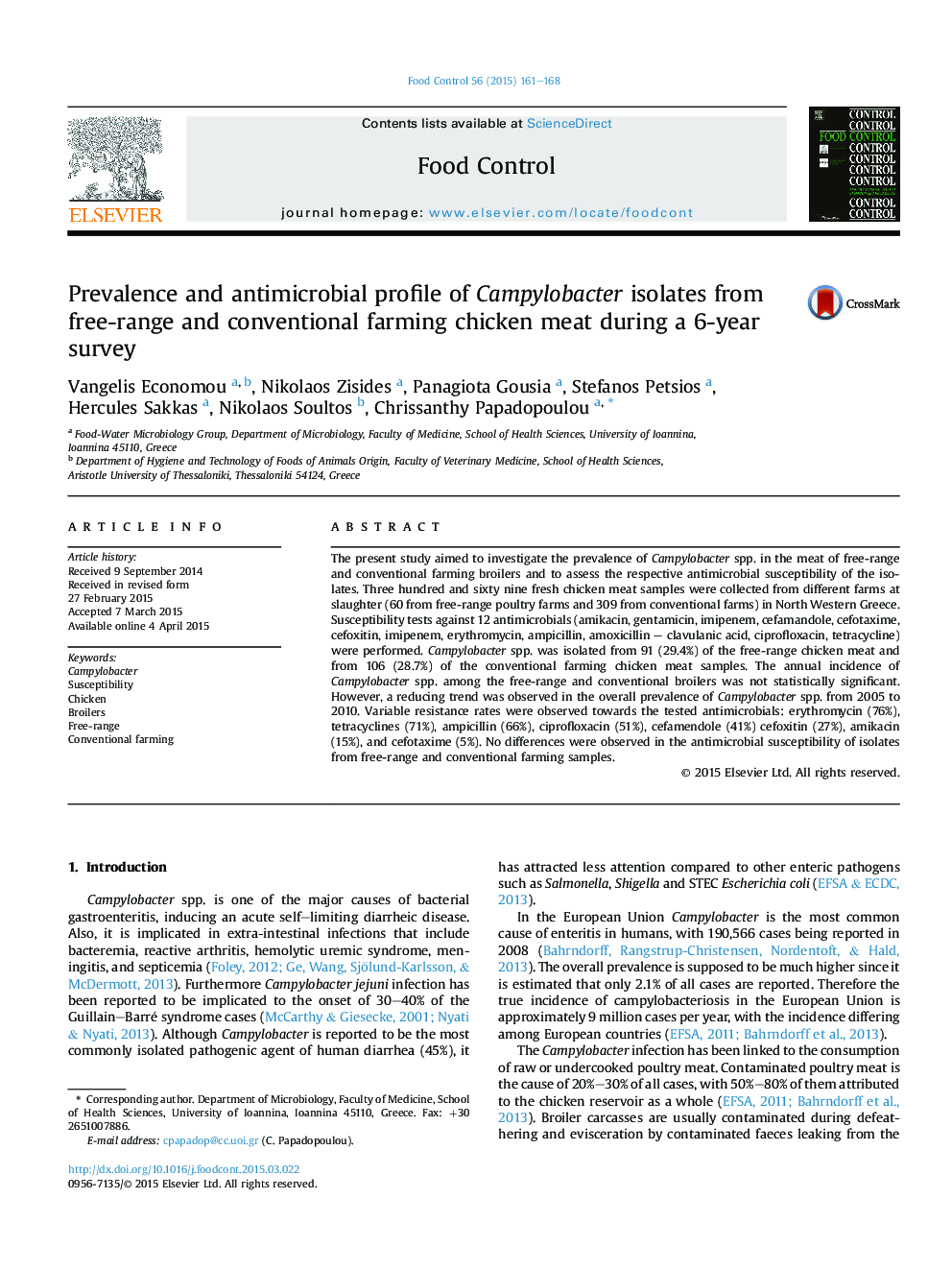| Article ID | Journal | Published Year | Pages | File Type |
|---|---|---|---|---|
| 4559231 | Food Control | 2015 | 8 Pages |
•Meat samples from free-range and conventional broilers were tested for Campylobacter.•The antimicrobial susceptibility of Campylobacter spp. isolates was examined.•A stable trend of Campylobacter spp. infestation was observed during the last four years of the study.•No difference in Campylobacter prevalence between free-range and conventional samples was found.•Marked antimicrobial resistance of the Campylobacter spp. isolates was observed.
The present study aimed to investigate the prevalence of Campylobacter spp. in the meat of free-range and conventional farming broilers and to assess the respective antimicrobial susceptibility of the isolates. Three hundred and sixty nine fresh chicken meat samples were collected from different farms at slaughter (60 from free-range poultry farms and 309 from conventional farms) in North Western Greece. Susceptibility tests against 12 antimicrobials (amikacin, gentamicin, imipenem, cefamandole, cefotaxime, cefoxitin, imipenem, erythromycin, ampicillin, amoxicillin – clavulanic acid, ciprofloxacin, tetracycline) were performed. Campylobacter spp. was isolated from 91 (29.4%) of the free-range chicken meat and from 106 (28.7%) of the conventional farming chicken meat samples. The annual incidence of Campylobacter spp. among the free-range and conventional broilers was not statistically significant. However, a reducing trend was observed in the overall prevalence of Campylobacter spp. from 2005 to 2010. Variable resistance rates were observed towards the tested antimicrobials: erythromycin (76%), tetracyclines (71%), ampicillin (66%), ciprofloxacin (51%), cefamendole (41%) cefoxitin (27%), amikacin (15%), and cefotaxime (5%). No differences were observed in the antimicrobial susceptibility of isolates from free-range and conventional farming samples.
